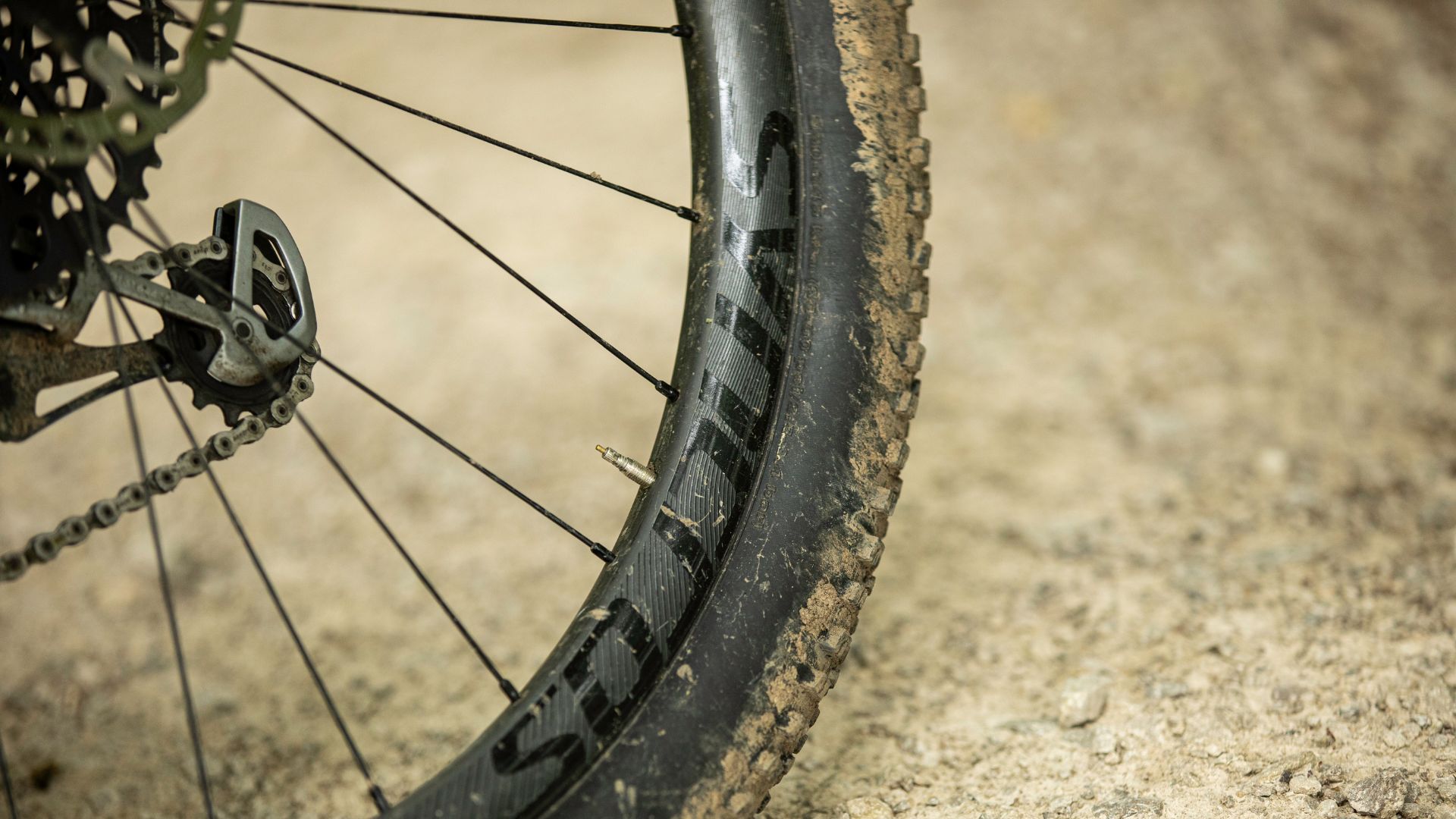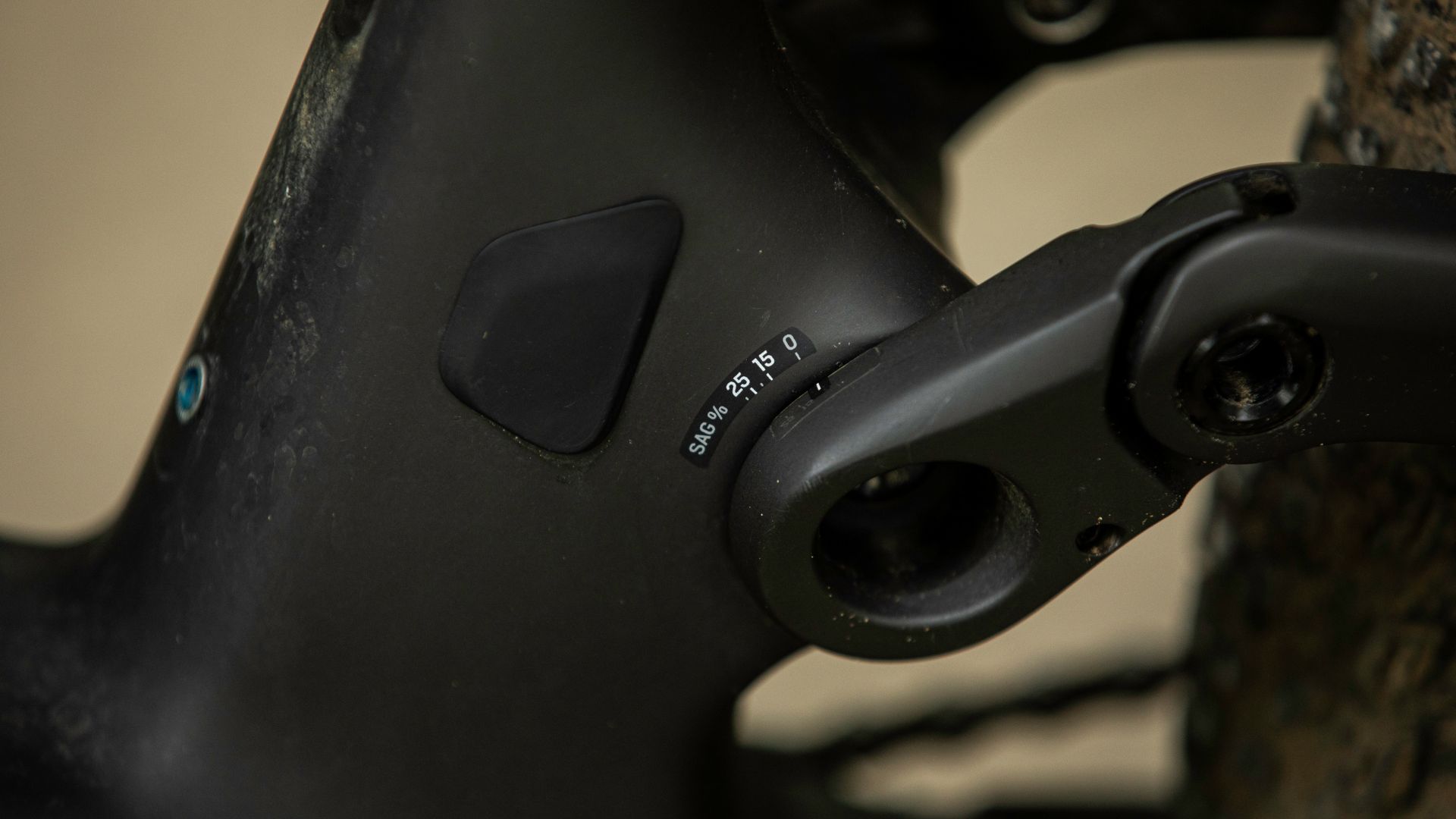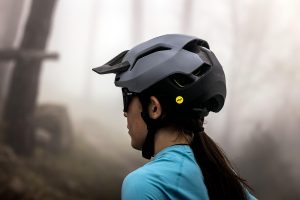We know the Scott Spark RC World Cup AXS is the bike that's taken multiple World Cup champ Nino Schurter to victory, but how does it perform on local trails and hills?
Scott Spark RC World Cup AXS first ride review
“Hey mate, that E-bike is really quiet”. Not once. I had that comment three times on one ride. Okay, so a Saturday afternoon at Cannock Chase isn’t the World Cup XCO circuit that Scott honed the latest generation of Spark on. But then I’m not Nino Schurter. Or any of the other pros who’ve helped hone the various iterations of this bike into THE dominant XC racing machine of the past decade. One of the best cross-country mountain bikes out there? The proof is in the winning.
Need to know:
- The benchmark 29er for XC/Marathon/epic ride efficiency
- New lightweight, stiff, hidden shock frameset with double water bottle mounts
- Multi-mode TwinLoc suspension offers 120mm/80mm/lockout, but also means lots of cables and levers
- Properly progressive adjustable geometry thanks to integrated angle headset
- Full XC spec, with integrated cockpit and 100mm Fox dropper

And it’s easy to see where the fitness flattering confusion occurs. The bulbous belly of the new frame layout that hides the shock and linkage adds a new twist to the ‘it must have a motor’ speed the Spark RC World Cup AXS arrives on the back wheel of other riders.
It’s not just the shock that’s invisible on this 29er XC race bike. Looking at the new Spark, there’s no way of knowing that Scott’s engineering team ran through over a million computer simulations of different potential carbon lay ups for the four sizes of Spark. Or that the RC World Cup frames here uses the higher grade sub 2kg (frame, shock and fixtures) HMX carbon, rather than the 160g heavier HMF frame of the cheaper, lookalike RC Team Issue AXS.

And while few riders are going to take advantage of the rare ability to fit a 38 tooth chainring to the frame like Nino does, you can definitely expect to be using higher gears than you would on most other bikes.
That’s for many more reasons than most bikes too. The impressively low weight of the frame, carbon wheels and all-in-one carbon cockpit are a basic mass v acceleration mathematics win. Sure, the cockpit is not as radical as the dropped ‘gull wing’ bar shape used by Nino (that’s one of several shapes available as an upgrade) but the low flat bar height and ‘steep for XC’ seat angle are perfect for climbing poise.

Then there’s the TwinLoc handlebar remote that accentuate the altitude/sprint gain arithmetic further by allowing you to run the rear suspension firmer when needed, 80mm ‘Traction’ mode or a soft lockout option on the RockShox SID fork and custom RockShox Nude 5 shock.
They’re also a significant psychosomatic gain in terms of perceived efficiency compared to the more neutral 125mm Open shock setting. Add super fast rolling Maxxis Rekon Race tyres, on lower pressure friendly 30mm rims, to the rock solid frame and the Spark is an obvious watt multiplier.

Frame and geometry
While the overall stiffness and ‘Traction’ mode are outstanding features, they are not unique to Scott. Where the Spark not only twists the knife on the category but also kicks it hard in the unmentionables is the way it descends.
If you’ve followed the Spark story from the start you’ll know it’s always been way ahead of the curve in terms of taking trail bike geometry between the race tape. The latest Spark takes that further by allowing you to subvert the already stable 67.2º head angle to 66º. Inbetweeners and Satanists can get a non offset cup for a 66.6º head angle too.

Because the head angle adjustment doesn’t noticeably affect seat angle or BB height, you’re not compromising climbing poise or pedal clearance with your chosen setting either. Making the head angle change only takes a couple of minutes to do on the trail so it’s easy to see which steering response you prefer for a specific course/ride. That was actually quite eye opening for me, coming from a ‘slacker is better’ trail perspective.
The fast and loose descending gains of the slacker head angle were definitely at the expense of tighter corner exit control and between rocks/roots line precision on climbs. It’s also worth noting that the difference in ride height between the progressive 80mm ‘Traction’ setting and the 125mm travel ‘Open’ setting is obvious in terms of angle of attack on climbs and out of turns too.

Ride impressions
No, the 125mm travel isn’t a miss print. Yes, Scott claims 120mm of travel, but actual vertical axle movement is 5mm more. That’s a lot by XC standards but it syncs really well with the 120mm SID Select+ fork. Not just in numbers but in feel too. On the open setting the Spark is not the plushest deeper into the travel in pure trail terms, but consistency is impressive.
Also with the ability to firm up the suspension feel with the TwinLoc remote, you can also run the shock softer than you normally would, gaining excellent traction and sensitivity under power while giving the bike a more pronounced Jekyll and Hyde feel when you toggle between settings.

So the vibe of the Spark RC is definitely predatory, rather than playful, but the 740mm flat bar and short 100mm drop Fox Transfer SL post didn’t hold me back significantly on red (and old school black) grade descents or off piste singletrack. I even rode the notoriously savage Ard Rock Enduro course on the Spark with only a tyre switch, just to prove that point.
Yes, the triple lever remote looks untidy on the otherwise super clean frame/front end, But I only accidentally hit the dropper remote twice in several months of riding while trying to swap between suspension modes. And while the TwinLoc set-up means there’s no independent compression adjustment on the shock, adjusting the spring pressure and rebound are easily reached underneath the sealed belly door.

A rubber plugged window on the frame also lets you check travel and there’s a sag set up protractor on the external part of the non drive-side linkage. The fact the shock is completely sealed bodes well for a long life too. That said, after several months of abuse, the linkages have started creaking a lot and the PressFit bottom bracket is a potential longevity limiter, unless you keep a close eye on it too.
Verdict
Unsurprisingly such a distinctive bike definitely isn’t for everyone. The TwinLoc remote and cables will be an eyesore for some and it adds weight and extra operator brain load. So while the multi-mode suspension efficiency and stiffness are a gift to analytical racers, the clipped feel lacks warmth and playfulness compared to flexier bikes in the category. It’s not the lightest 120mm ‘trailish’ geometry frame either, as Specialized’s Epic Evo is lighter than their own Epic 100mm bike. Then there’s the all-in-one cockpit that limits adjustability and the tall seat tube cuts down on longer stroke dropper post options as well. You may not want a bike that people mistake for an e-Bike either. But if that sort of athletic and aesthetic vibe appeals, then the Spark RC World Cup is definitely the bike to beat on the track and surprisingly rapid and confident on tougher trails too.
















